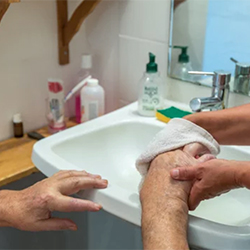Originally published by our sister publication Infectious Disease Special Edition
By Ethan Covey
The use of a coordinated, regional infection prevention strategy consisting of antiseptic soap and nasal ointment can reduce infections due to multidrug-resistant organisms (MDROs), as well as hospitalizations, deaths and hospital costs for patients in hospitals and residents of nursing homes and long-term care facilities (JAMA 2024 Apr 1. doi:10.1001/jama.2024.2759).

According to the CDC, more than 2.8 million antimicrobial-resistant infections occur in the United States each year, and over 35,000 people die as a result.
“Antimicrobial resistance is one of the largest-growing global public health threats, and the emergence of MDROs continues to outpace the development of new antibiotics to treat these infections,” said Susan Huang, MD, the medical director of epidemiology and infection prevention at UCI Health in Irvine, Calif. “Given this situation, prevention becomes essential.”
The study included data from 35 facilities: 16 hospitals, 16 nursing homes and three long-term care facilities in Orange County, Calif., that participated in an intervention focused on the use of chlorhexidine baths and twice-daily nasal iodophor. The study was conducted from July 1, 2017 to July 31, 2019.
The cleansing protocol was associated with a countywide reduction in MDRO infections by up to 30%, decreased hospitalizations due to infection among nursing home residents by 27%, and reduced hospital-associated deaths by 24%.
“The use of over-the-counter chlorhexidine antiseptic soap and nose ointment provides a relatively simple, cost-effective and proven strategy to reduce the spread of MDROs and the infections they cause,” Dr. Huang said.
“By working together, healthcare leaders can stop the spread within and between hospitals and nursing homes to prevent infections and save lives.”
Dr. Huang reported no relevant financial disclosures.

